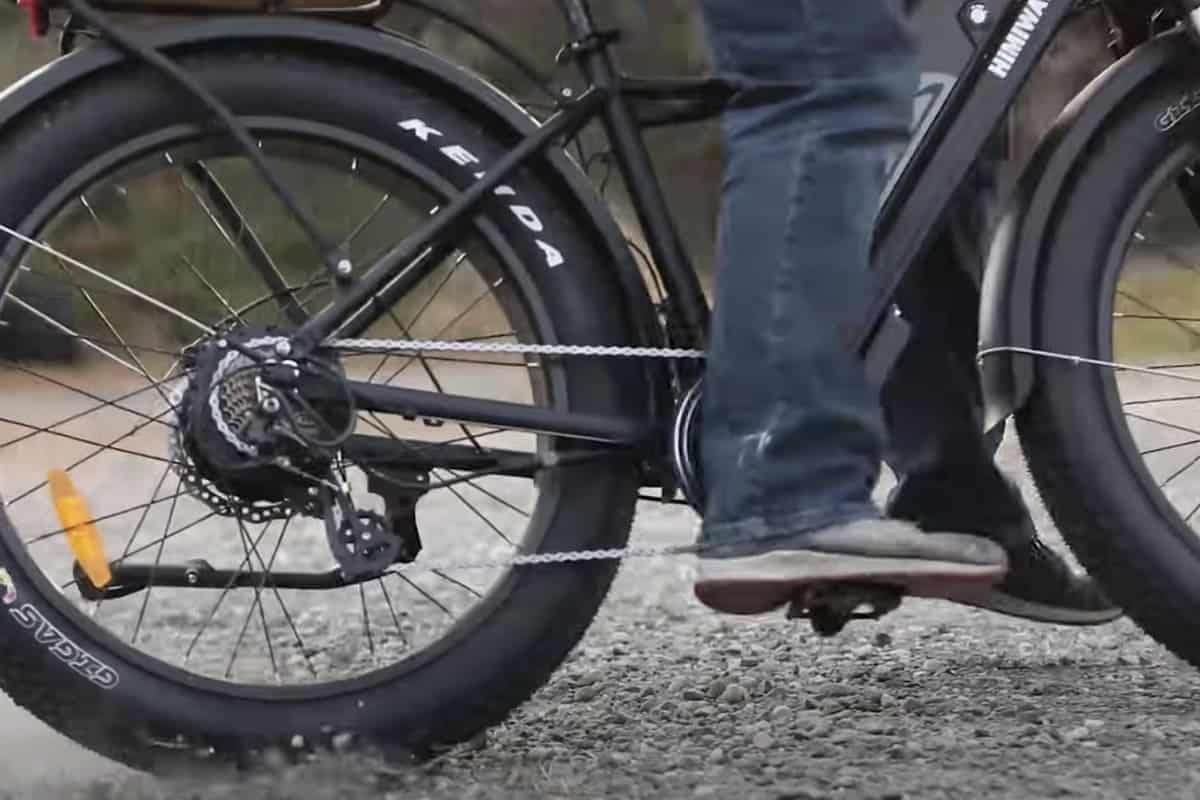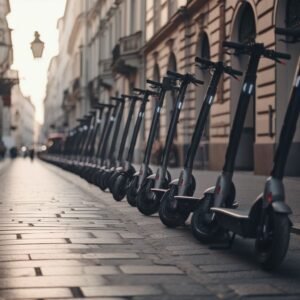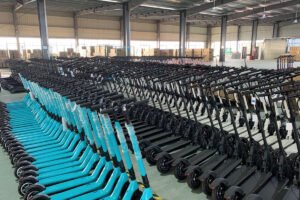The braking system is one of the critical parts on your eBike related to the stopping performance and safety features.
This guide will help you better understand what types of brake systems are generally used on eBike and how the brake system works to bring a stop; you will also know the main differences between two hot brake options: the hydraulic disc brake and mechanical disc brake.
Take a little time to read this post to make the right choice finding the best brake system most suited for you.
Table of Contents
- What Are The Parts That Bring A Stop To Your eBike?
- How Do These Parts Work Together To Slow The eBike Down?
- Brake Types
What Are The Parts That Bring A Stop To Your eBike?
Levers
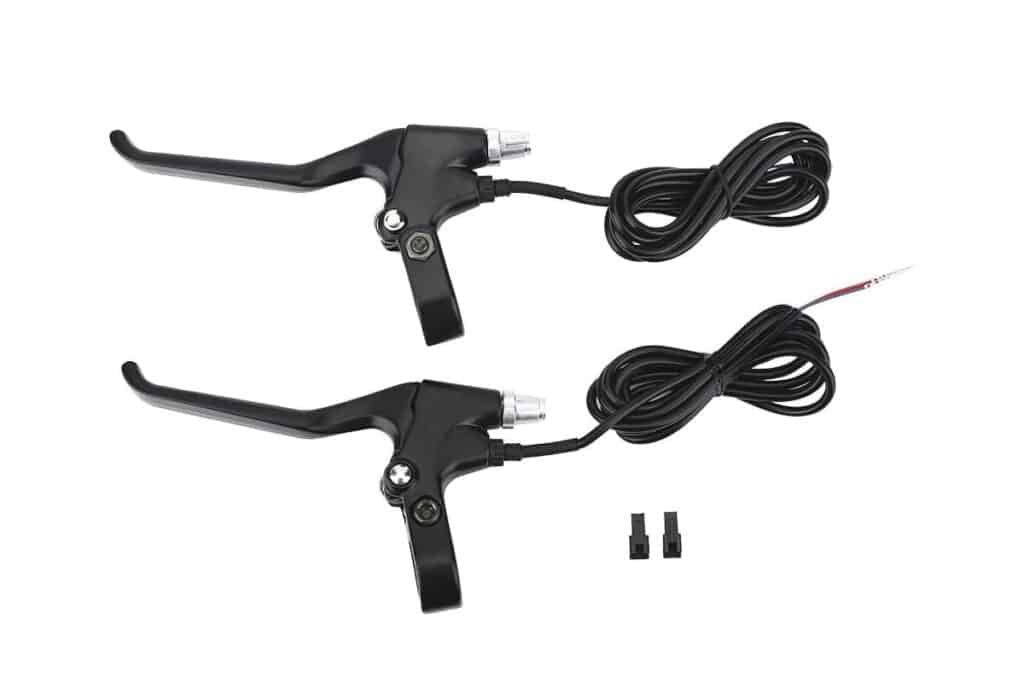
Brake levers are mounted on the handlebar. It is a part where the braking force is produced when pulled towards the bar.
Most electric bikes and standard bicycles have a left side brake lever connected to the front wheel and a right side lever for the rear wheel.
Motor cutoff switch
The main point that makes an electric bike differ from a standard bicycle is the motor cutoff switch, a safety feature, and even a law required in the US.
The motor cutoff switch, or brake cutoff switch, is a mechanical or magnetic switch placed inside the braking system somewhere connected to the lever. When the lever is pulled, you may or may not hear or feel a click depending on what type the switch is (a magnetic type switch is quite enough, so you can’t feel anything happening). What’s this click doing is sending a signal to the motor controller, which is installed somewhere else on your bike, to tell the controller to turn the motor off. That means you can not use the motor and the brake at the same time for safety reasons.
Cables
Steel cables connect brake levers to each wheel of your bike. The braking force traves from the lever all its way down to the caliper via the cable.
Caliper and Braking Pads
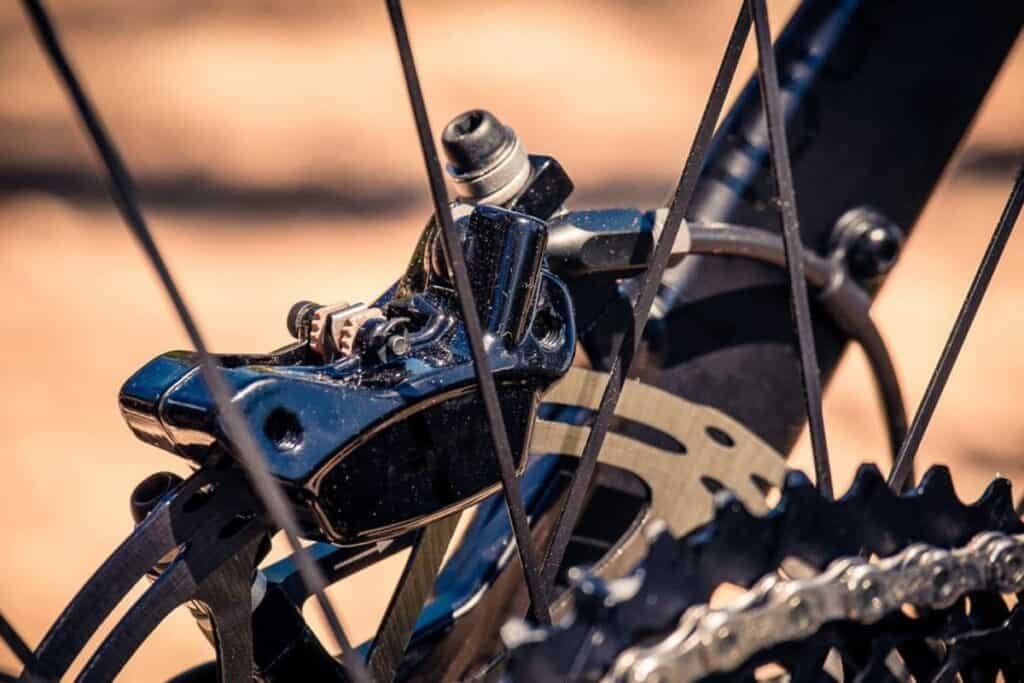
The caliper is a center housing unit that contains another critical braking component: braking pads.
To make a stop, the two opposing brake pads inside the caliper squeeze together to produce friction, slowing the wheels’ rotation down.
Some cheap braking pads are mounted on each side of the rotor with only the outer pads on one side moving; the inner pads on the other side, however, don’t move at all. It can work well, as you can see on many affordable electric bikes. However, the braking pads are going to wear faster when you go down a lot of hills or carry more weight, or riding at high speed, and you have to adjust both inner and outer pads individually, which wear unevenly. In short, they need adjustment and replacement frequently.
Rotor
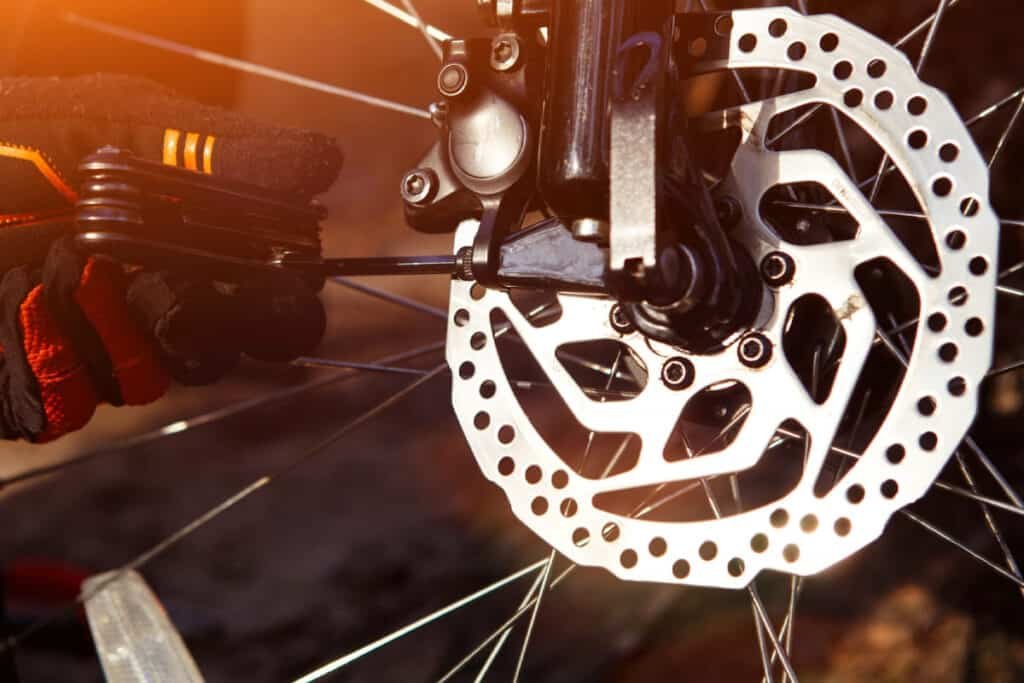
The rotor is a large metal disc that sits in the center of the wheel, holding all components on the wheel together, and rotors are mounted on each wheel for the disc brake system, which is something absent from the rim brake.
As the braking force is transferred to the caliper on the rotor, two braking pads move into the rotor to slow it down by creating friction.
The size of rotors is generally from 160mm on commuter bikes to 220mm on electric mountain bikes.
The larger a rotor is, the faster an e-bike can stop, but be aware that the larger the rotor, the braking pads is going to wear faster as well due to the more friction generated.
Piston
The number of pistons varies in different braking options. Normally, the more pistons a brake system has, the more stopping power it can produce.
Pistons are generally inside the master cylinder, and when it moves, fluid or air inside is compressed, thus transferring the brake force from the lever to the rotor.
How Do These Parts Work Together To Slow The eBike Down?
The brake levers are where the braking process starts, when they are pulled towards the bars, the braking force is created here, which then travels via the braking mediums such as steel cable or fluid all the way down to the caliper mounted on the rotor(or on somewhere near the upper parts of the wheel depending on what types of brake system you get, more on later), and the actual braking process complete here via two braking pads move together. Finally, the friction is created onto the rotor to slow down the rotation of each wheel to bring a stop to your eBike.
Brake Types
Generally, there are two braking types on your eBike: Rim brake and disc brakes.
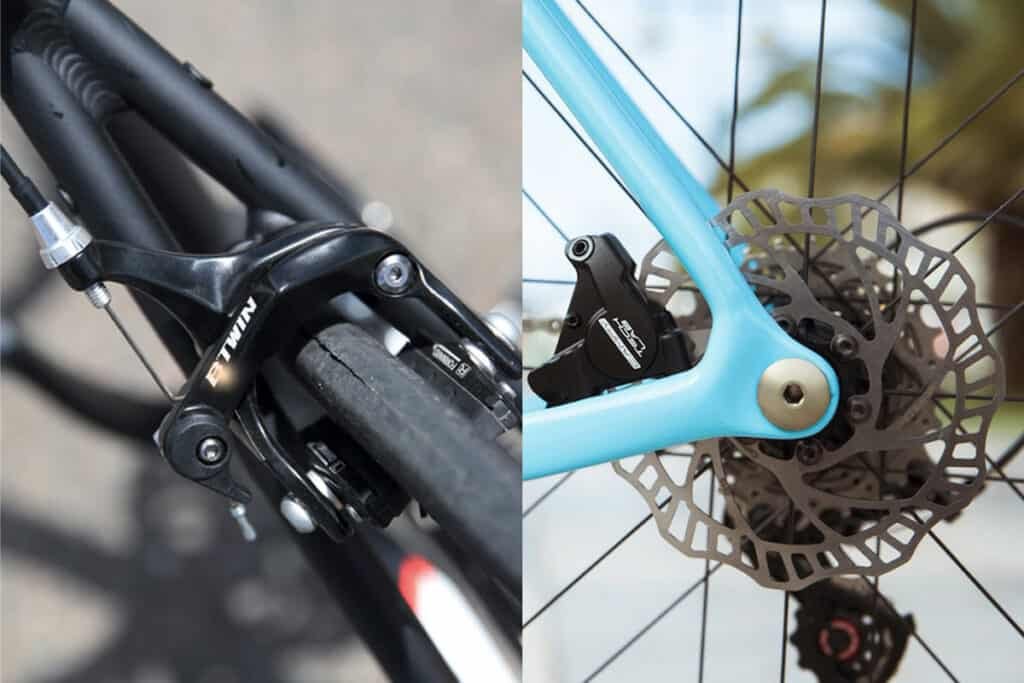
The two types are the same in terms of levers, cables, and calipers. The important thing about the disc brakes that’s different from the rim brake is where the actual brake process happens.
Disc brakes have rotors or discs mounted on the hub of each wheel which is something absent in the rim brake, which has braking pads on the edge of each wheel to make a stop, which means the braking force is transferred from the lever directly to the rim of each wheel.
Disc brake now has taken over the market that belonged to the rim brake, which is proved by the popularity use on most electric mountain bikes. Discs brake is far better than rim brake in just about everything related to the performance and efficiency.
Mechanical Disc Brake and Hydraulic Disc Brake
There are two brake options when it comes to the discs brakes: mechanical disc brake and hydraulic disc brake.
The main difference between them is the braking medium. The steel cable actuates a mechanical disc brake while the fluid actuates a hydraulic one. That means the way of how the braking force transfer from the lever to the rotor makes them different.
Mechanical disc brake refers to when you pull the lever, the connected steel cable is pulled and to produce the force which is then moved to the rotor while hydraulic disc brake refers to when you pull the lever, the pistons inside move to compress the fluid inside the cable to transfer the force to the rotor.
Pros of Hydraulic Disc Brake
The hydraulic disc brake is more efficient than the mechanical one by not having the cable pulling system producing friction. Because of that friction, the resulting force on the rotor for the mechanical disc brake is going to be less than the force you put in.
Another significant advantage of a hydraulic disc brake is its sealed system, so people don’t have to worry about getting dirt or mud during hundreds of miles of off-road riding. Because the hydraulic system doesn’t have any components exposed, it doesn’t need ongoing maintenance.
Cons Of The Hydraulic Brake
The higher price and the difficulty to maintain and get any parts of it to be replaced if potential issues arise are the two biggest barriers for people not to choose the hydraulic disc brake.
Most consumers don’t have special tools and enough expertise to take the task of dealing with the maintenance, and despite it being a sealed system, that doesn’t mean it won’t fail, and once it does, the riders will get their bike out of the brake and can’t get it solved until seeing the next shop on their way.
A mechanical brake is a cable-pulling system, more like the rim brake, which is easy to set up and low to maintain. You could even replace braking parts from bike to bike when needed. And it’s much cheaper than the hydraulic ones.
Mechanical disc brakes can’t compete with the hydraulic in terms of performance and efficiency, and mechanical need ongoing maintenance. However, many users still prefer to opt for mechanical disc brakes over hydraulic ones even in the year 2022, when more and more manufacturers are trying to equip their new eBike with the hydraulic braking system.
We chalked this into the following reasons:
- The mechanical disc brake is much cheaper than the hydraulic brake.
- Although the mechanical is struggling to match the hydraulic efficiency, that doesn’t mean mechanical can not stop efficiently. The mechanical brake can actually work really well and works perfectly for more gentle riders or new riders.
- The mechanical brake is really easy and low to maintain
- When some parts on it can not work, it’s easy to find the replacements in a shop nearby.
In Summary
The fluid inside the hydraulic brakes was compressed to multiply the power you put into the lever; you can get a far better stopping power with less effort compared to the mechanical disc brake. And due to the sealed system that is more discreet and protected doesn’t have as much mud going into the system as the mechanical does and requires far less maintenance once set up. It is very suitable for more aggressive riders with performance in mind, but the biggest challenge for these riders is the risk when they need to maintain or replace something on this brake system at home.
The mechanical brakes can not reduce as large amount of the created friction as the hydraulic brakes do, particularly when wet, which means more squeezed power by hand is needed. However, it can still work great with a beautiful short stopping distance, especially for gentle riders, daily commuters, or first-time buyers. Mechanical brakes may be hard to set up, but they are much easier to maintain and fix when issues arise. Its lower price and the fact of easy to maintain (though more maintenance required) do appeal to many eBike consumers.

